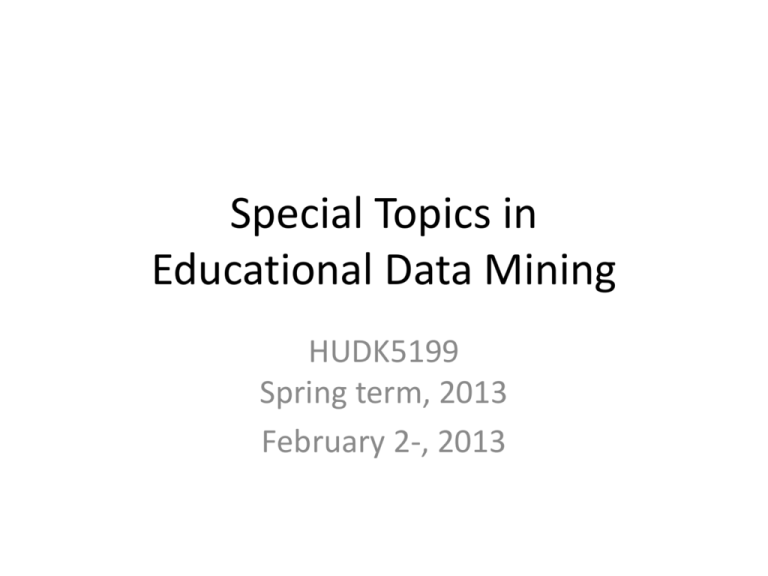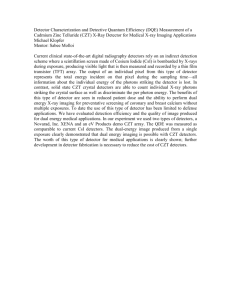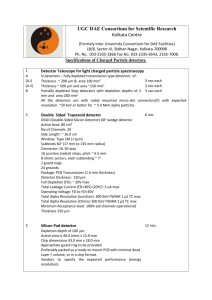pptx - Columbia University
advertisement

Special Topics in Educational Data Mining HUDK5199 Spring term, 2013 February 2-, 2013 Today’s Class • Behavior Detection • And then some discussion of features in Excel between end of class and 5pm – We will start today, and continue in future classes as needed Behavior Detection • Inferring key aspects of a student’s behavior Behaviors people have detected Disengaged Behaviors • Gaming the System (Baker et al., 2004, 2008, 2010; Cheng & Vassileva, 2005; Walonoski & Heffernan, 2006; Beal, Qu, & Lee, 2007) • Off-Task Behavior (Baker, 2007; Cetintas et al., 2010) • Carelessness (San Pedro et al., 2011; Hershkovitz et al., 2011) • WTF Behavior (Rowe et al., 2009; Wixon et al., UMAP2012) 5 Meta-Cognitive Behaviors • Help Avoidance (Aleven et al., 2004, 2006) • Unscaffolded Self-Explanation (Shih et al., 2008; Baker, Gowda, & Corbett, 2011) • Exploration Behaviors (Amershi & Conati, 2009) 6 Building off of Classification • In terms of data mining algorithms, Behavior Detection is pretty much just Classification • So why does it need a lecture to itself? Because There’s So Much More… • Than just what algorithm you use But before we get going • Homework 4 solutions • Wanjia Li • Huacheng Li • Kara Carpenter Awesome… Things you need to think about… • When you’re doing behavior detection Where did the labels come from? • Self-report? • Field observations? • Text replays? Self-report • Fairly common for constructs like affect and self-efficacy • Not as common for labeling behavior Are you gaming the system right now? Yes No Was recommended to me by CMU IRB compliance officer in 2003 Are you gaming the system right now? Yes No Field Observations • One or more observers watch students and take systematic notes on student behavior • Takes some training to do right (Ocumpaugh et al., 2012) • Free Android App developed by my group (Baker et al., 2011) Text replays • Pretty-prints of student interaction behavior from the logs Examples Major Advantages • Blazing fast to conduct – 8 to 40 seconds per observation Notes • Decent inter-rater reliability is possible • Agree with other measures of constructs • Can be used to train behavior detectors Major Limitations • Limited range of constructs you can code • Gaming the System – yes • Collaboration in online chat – yes (Prata et al, 2008) • Frustration, Boredom – sometimes • Off-Task Behavior outside of software – no • Collaborative Behavior outside of software – no Major Limitations • Lower precision (because lower bandwidth of observation) Another Labeling Issue How good are the labels? • You shouldn’t expect your detectors to do better than the inter-rater reliability of human at coding the same construct How good are the labels? • You shouldn’t expect your detectors to do better than the inter-rater reliability of human at coding the same construct • In fact, what does it mean if – human kappa = 0.60 – your detector’s kappa = 0.94 Some Validity Questions For what uses is my model valid? • For what users will it work? • For what contexts will it work? • Is it valid for moment-to-moment assessment? • Is it valid for overall assessment? • If I intervene based on this model, will it still work? Multi-level cross-validation • When you cross-validate, software tools like RapidMiner allow you to choose the batch (level) that you cross-validate on • What levels might be useful to cross-validate on? Multi-level cross-validation • • • • • • Action Student Lesson School Demographic Software Package What people actually do (2013) •Action •Student • Lesson • • • School Demographic Software Package Lack of testing across populations is a real problem! Why? 36 Medicine • Medical drug testing has had a history of testing only on white males (Dresser, 1992; Shavers-Hornaday, 1997; Shields et al., 2005) – Leading to medicines being used by women and members of other races despite lack of evidence for efficacy 37 We… • Are in danger, as a field, of replicating the same mistakes! 38 Settings • A lot of student modeling research is conducted in – suburban schools (mostly white and Asian populations, higher SES) – elite universities (mostly white and Asian populations, higher SES) – In wealthy countries… 39 Settings • Some research is conducted in – urban schools in wealthy countries (mostly minority groups, lower SES) 40 Settings • Almost no research is conducted in – rural schools in wealthy countries (mostly white populations in the US, lower SES) – community colleges and HBCUs/HHSCUs/TCUs (mostly African-American and Latino and indigenous populations, lower SES) – developing countries (there are notable exceptions, including Didith Rodrigo’s group in the Philippines) 41 Why not? 42 Challenges • There are often significant challenges in conducting research in these settings – Uncooperative city school IRBs – Parents and community leaders who do not support research – partly out of legitimate historically-driven cynicism about the motives and honesty of University researchers (Tuhiwai Smith, 1999) – Inconvenient locations – Outdated computer equipment – Physical danger for researchers 43 However • If we ignore these populations • Our research may serve to perpetuate and actually increase inequalities 44 However • If we ignore these populations • Our research may serve to perpetuate and actually increase inequalities – Effective educational technology for everyone? – Effective educational technology for a few? – Or effective educational technology for a few, and unexpectedly ineffective educational technology for everyone else? 45 Another validation question • Are there ever situations where it makes sense to test your model on the original data set where it was developed? Another validation question • Are there ever situations where it makes sense to test your model on the original data set where it was developed? • Computing complexity-based goodness metrics such as BiC • Determine maximum possible performance of modeling approach Moment-to-Moment and Overall Assessment • It’s often a good idea to study how well a detector works – For determining when a behavior is occurring – For determining how much a behavior occurs – For determining who engages in a behavior • Really depends on how you want to use a detector If I intervene based on this model, will it still work? • Not studied very much • If you intervene, the behaviors you’ve been making inference on may develop a different meaning – Students in the Philippines intentionally) game the system to receive interventions based on a gaming detector (Rodrigo et al., 2012) – Does gaming the system have the same semantics? If I intervene based on this model, will it still work? • What if students figure out how your detector works, and then game the system to fool it? • If your off-task detector is – IF THE STUDENT IS IDLE MORE THAN 80 SECONDS, OFF-TASK • It’s easy for the student to just hit enter or somesuch every minute or so Leveraging Detector Confidence • A lot of detectors are better at relative confidence than at being right about whether a student is above or below 50% confidence – E.g. A’ is substantially higher than Kappa • If a student is 48% likely to be off-task, treat them differently if they are 3% likely or 98% likely – Strong interventions near 100% – “Fail-soft interventions” near 50% – No intervention near 0% Leveraging Detector Confidence • In using detectors in discovery with models analyses (which we’ll discuss later in the semester) • Always use detector confidence – Why throw out information? Comments or Questions • About Assignment 4? Next Class • Monday, February 25 • Feature Engineering and Distillation – WHAT • Assignment Due: 3. None Excel • Plan is to go as far as we can by 5pm • We will continue after next class session • Vote on which topics you most want to hear about Topics • • • • • • • • • • • • Using average, count, sum, stdev (asgn. 4 data set) Relative and absolute referencing (made up data) Copy and paste values only (made up data) Using sort, filter (asgn. 4 data set) Making pivot table (asgn. 4 data set) Using vlookup (Jan. 28 class data set) Using countif (asgn. 4 data set) Making scatterplot (Jan. 28 class data set) Making histogram (asgn. 4 data set) Equation Solver (Jan. 28 class data set) Z-test (made up data) 2-sample t-test (made up data) • Other topics? The End




